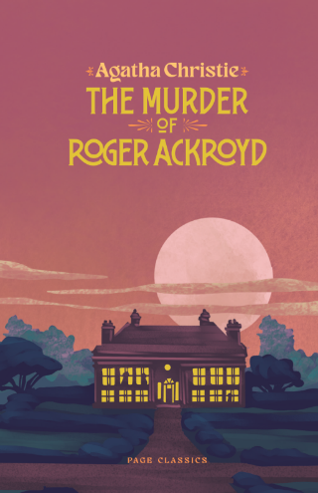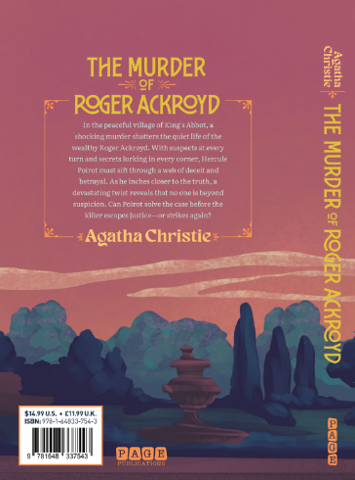The Murder of Roger Ackroyd Agatha Christie
- Precio habitual
- $7.50 USD
- Precio habitual
-
$14.99 USD - Precio de venta
- $7.50 USD
- Precio unitario
- por
Type : Fiction
SKU : 9781648337543
No se pudo cargar la disponibilidad de retiro
The Murder of Roger Ackroyd (1926) is one of Agatha Christie’s most famous and groundbreaking works, often considered a landmark in the detective fiction genre. Not only does it feature Hercule Poirot, but it also introduces one of the most innovative and daring narrative twists in literary history—one that challenges and subverts the very conventions of the detective novel.
The story takes place in the quiet village of King’s Abbot, where the wealthy but troubled Roger Ackroyd is found stabbed to death in his study. Ackroyd had been in the process of uncovering dark secrets about his fiancée, Mrs. Ferrars, a woman who had recently died under suspicious circumstances. Ackroyd had discovered that she had poisoned her first husband and was being blackmailed by someone, but before he could reveal everything in a letter, he was murdered. The obvious question becomes: Who killed Roger Ackroyd, and why?
Enter Hercule Poirot, who, despite being retired and living a quiet life in the village, is drawn into the case by his old friend, Dr. James Sheppard, who serves as the narrator of the story. Dr. Sheppard is a local physician and a man of reason, and he becomes Poirot's assistant in the investigation. However, the reader is not aware at first of the crucial detail that Poirot is not the only one with the sharp eye necessary to uncover the truth.
Agatha Christie’s genius in this novel lies in her handling of the unreliable narrator and her use of the twist ending. Dr. Sheppard, as the narrator, provides a view of the investigation that is partial, and he withholds key information, leading the reader down a series of red herrings. Without giving away too much, it’s safe to say that The Murder of Roger Ackroyd delivers one of the most stunning and unexpected reveals in detective fiction. The final solution to the murder is shocking in its audacity, and it forces readers to reconsider everything they thought they knew about detective stories.
This novel is widely considered one of Christie’s finest works, partly because of the sheer audacity of the narrative structure and the twist. It is a great example of how Christie could push the boundaries of the detective genre, maintaining the allure of her sharp, logical, and methodical detective—Poirot—while also playing with the expectations of her audience. Her experimentation with narrative form here would go on to influence countless other mystery writers, but The Murder of Roger Ackroyd remains one of her most beloved and important works.
The quote about Hercule Poirot coming out of retirement is quite fitting because this novel shows him at his most methodical and brilliantly logical—though it's also a case where Poirot’s involvement, more than just his detective skills, becomes a key element. The way he solves the crime shows how Christie’s Poirot is both a genius of deduction and a character with his own strict moral code, further cementing his legacy as one of the great literary detectives.
This novel’s impact on the detective genre cannot be overstated, and if you haven’t read it yet, it's a must-read for anyone interested in classic mysteries, the history of detective fiction, or simply a great story told with masterful suspense and narrative flair.
5.1 x 7.87 (Inches)
252 pages



